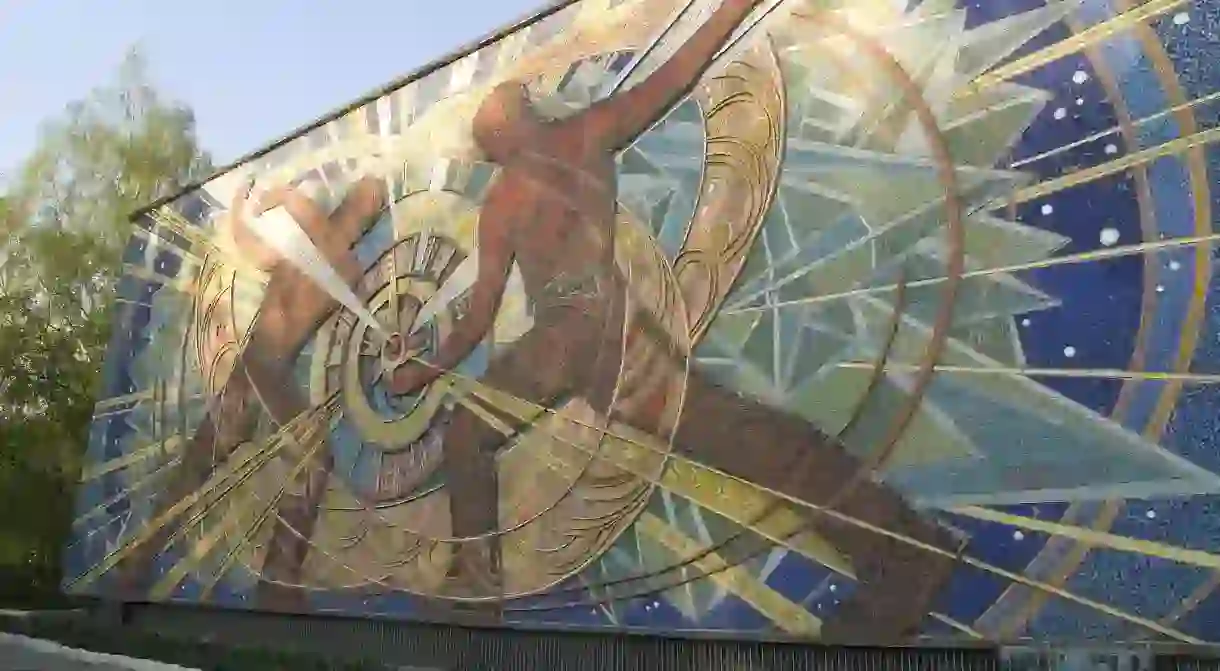Soviet Mosaics: A Uniquely Ukrainian Art

Throughout Ukraine, monumental works of mosaic art can be found. During the Soviet era, these images were a kind of state-led alternative to modern street art: they made the grey and uniform architecture vivid and interesting. However, every masterpiece hides encrypted stories, as they were also used for national manipulation and government propaganda.
Soviet mosaics as integral parts of Ukrainian culture
Considered works of art, mosaics play a significant role in Ukrainian culture, containing samples of architecture and visual art. Unfortunately, some of them have been subject to the decommunization processes that appeared as a result of the political situation in Ukraine in 2014 (Revolution of Dignity). All the symbols of the Communist Party, such as monuments, dedicated to Soviet state authorities or other figures, town and street names, as well as mosaics of the Soviet era, were been ordered to be dismantled.
A post shared by Ukrainian Soviet Mosaics (@ukrainianmosaics) on May 6, 2017 at 9:47pm PDT
However, the issue of the destruction of these works has been the focus of considerable debate. According to Soviet Mosaics in Ukraine — the project aiming to collect, preserve and promote the monumental art in terms of its artistic value — preserving Soviet cultural heritage is a marker of civilized society, where the main value is the attentive treatment of cultural and historical elements.
The meaning behind them
Interestingly, during Soviet times, mosaics were used as a means of propaganda. They served as a kind of outdoor advertising, creating heroes and enemies in the eyes of the nation. For instance, a lot of mosaics depicted military victories or space achievements, heroes of labour like miners, steelworkers, builders, and milkmaids — all seeking and working for the sake of the Soviet state’s bright future.
A post shared by Ukrainian Soviet Mosaics (@ukrainianmosaics) on Nov 29, 2016 at 1:00am PST
In addition to images, mosaics were decorated with ideas and slogans. ‘Art belongs to the people’ is written on the House of Culture in the town of Sloboda; the words ‘Your ships, Mykolaiv, furrow the planets of the sea’ adorn the welcome stele at the entrance to the left bank in the city of Mykolayiv; and “Oh, sports! You are the world” is hanging on the wall of the Kharkov Palace of Sports. Despite the Soviet propaganda, the roots of mosaics as an art trace back to the ancient Byzantine Empire. Thus, the images resemble the ancient frescoes and mosaics in 11th-century Ukrainian cathedrals — priceless gems of local architecture.
A post shared by Ukrainian Soviet Mosaics (@ukrainianmosaics) on Feb 28, 2018 at 1:39am PST
Where to look for these masterpieces
The Ukrainian photographer Yevgen Nikiforov has written a book, Decommunised: Ukrainian Soviet Mosaics, which is a collection and a guide to the most prominent and interesting pieces from all over Ukraine. Via his Instagram account, you can marvel at the uniquely Ukrainian art, the future of which is currently in question. Therefore, if you have an opportunity, don’t miss a chance to visit these compelling artworks while you’re travelling through Ukraine. It is not only the largest Ukrainian cities like Kiev, Lviv and Dnipro that are rich with these architectural gems – any rural town or village, wellness centre, museum and even residential building can be decorated with a striking mosaic.
A post shared by Ukrainian Soviet Mosaics (@ukrainianmosaics) on Aug 10, 2017 at 1:38am PDT













